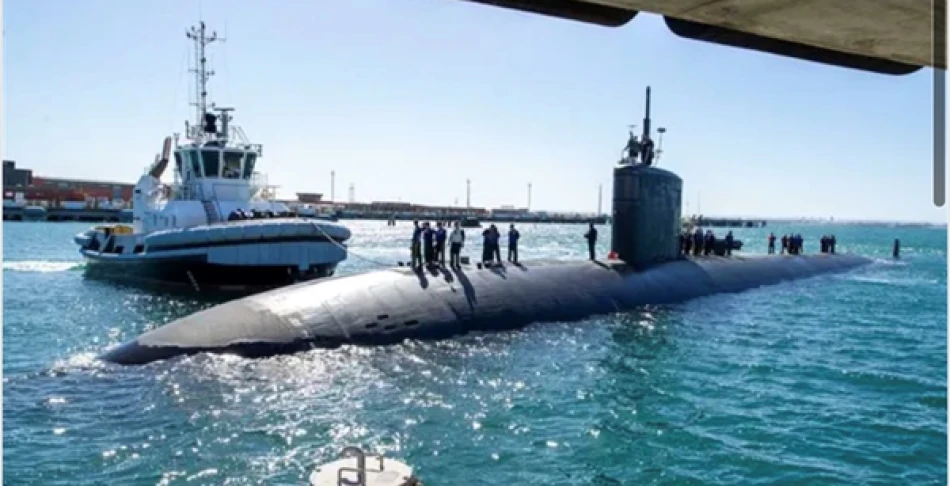
Australia and UK Sign Historic Submarine Deal: Unlocking Nuclear-Powered Capabilities
Australia and Britain Forge Nuclear Submarine Alliance in Bold Challenge to China's Pacific Dominance
Australia and Britain have signed a landmark 50-year defense agreement to jointly build nuclear-powered submarines, marking the most significant military industrial partnership between the two nations since World War II. The deal, formalized under the broader AUKUS alliance with the United States, represents Australia's largest-ever industrial project and signals a dramatic shift in Pacific power dynamics as Western allies counter China's growing naval influence in the region.
The AUKUS Framework Takes Shape
The bilateral agreement signed in Geelong, Victoria, operates within the trilateral AUKUS pact announced in 2021, which stunned the international community by breaking Australia's long-standing commitment to nuclear non-proliferation in military applications. Australian Defense Minister Richard Marles and his British counterpart John Healey formalized the deal, which will see Britain transfer sensitive nuclear propulsion technology to Australia for the first time.
This marks a fundamental departure from Australia's previous defense strategy, which relied heavily on conventional diesel-electric submarines. The Collins-class submarines, built in the 1990s with Swedish technology, have struggled with maintenance issues and limited range—critical shortcomings when patrolling the vast Indo-Pacific theater.
Economic and Industrial Implications
Job Creation and Industrial Transformation
British Defense Minister Healey emphasized that the program will generate "tens of thousands of jobs" across both nations, with Australia expected to see the larger employment boost. The project will require establishing entirely new industrial capabilities in Australia, from nuclear engineering expertise to specialized manufacturing facilities.
For Britain, the deal provides a crucial export opportunity for its submarine technology at a time when defense exports have become increasingly important post-Brexit. BAE Systems and Rolls-Royce, key players in Britain's nuclear submarine program, are likely to benefit significantly from technology transfer agreements and ongoing maintenance contracts.
Australia's Industrial Leap
Marles' description of this as Australia's "largest industrial project in history" reflects the massive infrastructure investment required. Australia will need to build new shipyards, train thousands of nuclear technicians, and establish regulatory frameworks for nuclear propulsion—capabilities that typically take decades to develop.
The project's scale dwarfs even Australia's mining megaprojects, with estimated costs exceeding $200 billion over the program's lifetime. This represents a fundamental bet on Australia's ability to develop advanced manufacturing capabilities typically associated with established nuclear powers.
Strategic Context and Regional Impact
Countering China's Naval Expansion
The timing of this agreement reflects growing Western concern about China's rapid naval expansion and increasingly assertive territorial claims in the South China Sea. Nuclear-powered submarines offer Australia the ability to patrol far from home bases for months without surfacing—a critical capability when monitoring Chinese naval activities across the Pacific.
Unlike conventional submarines that must surface regularly to recharge batteries, nuclear vessels can remain submerged indefinitely, making them nearly undetectable and capable of long-range deterrent patrols. This capability transforms Australia from a regional coastal defense force into a blue-water naval power.
Comparison with Regional Allies
The AUKUS submarine program represents the most significant military technology transfer since the US-UK Special Relationship began sharing nuclear secrets in the 1950s. Even close allies like Japan and South Korea have not received such sensitive nuclear propulsion technology, highlighting Australia's unique strategic importance to Western Pacific defense.
This exclusive access puts Australia in a select group of six nations operating nuclear submarines, alongside the US, UK, France, Russia, and China—a dramatic elevation of its military technological status.
Challenges and Timeline Realities
Despite the ambitious rhetoric, significant hurdles remain. Australia's first domestically-built nuclear submarine is not expected until the late 2030s, with the program potentially extending into the 2040s before reaching full operational capability. This timeline means Australia will rely on aging Collins-class submarines and potentially leased British or American vessels during the transition period.
The technical challenges are immense: Australia must develop nuclear regulatory expertise, train submarine crews in nuclear operations, and establish secure facilities for handling weapons-grade uranium. The program's success will largely depend on whether Australia can rapidly develop these capabilities while managing costs and timelines that historically plague major defense projects.
 Layla Al Mansoori
Layla Al Mansoori







